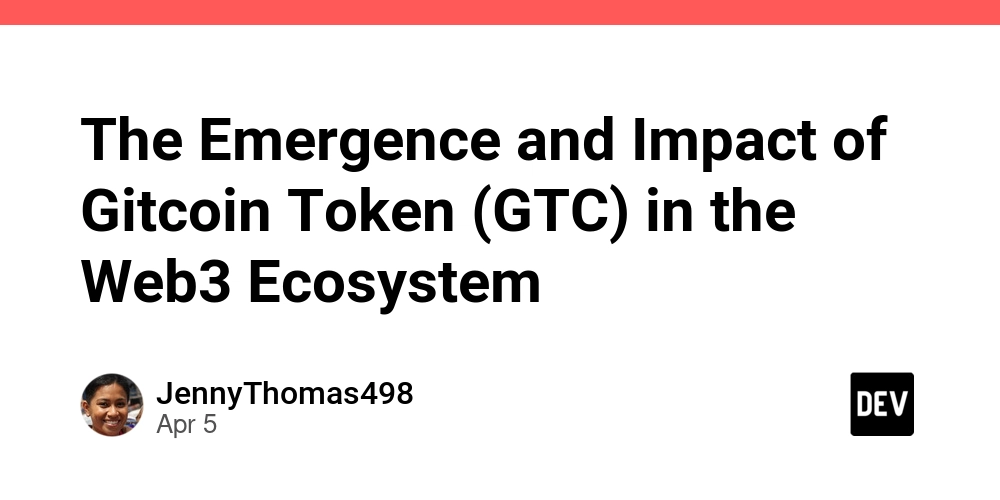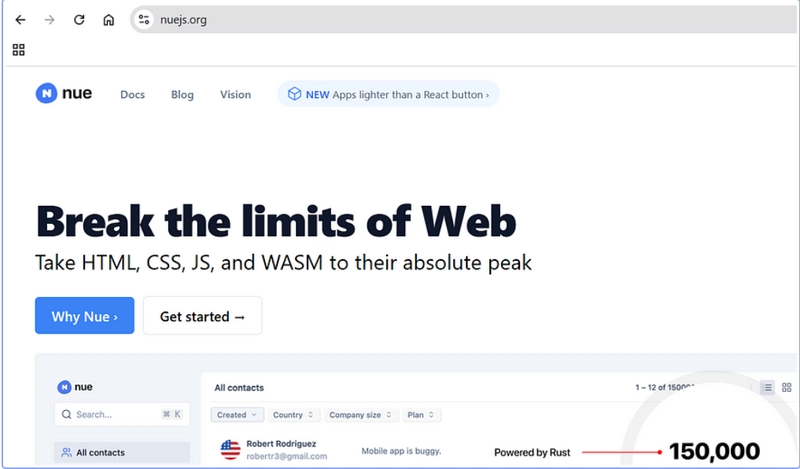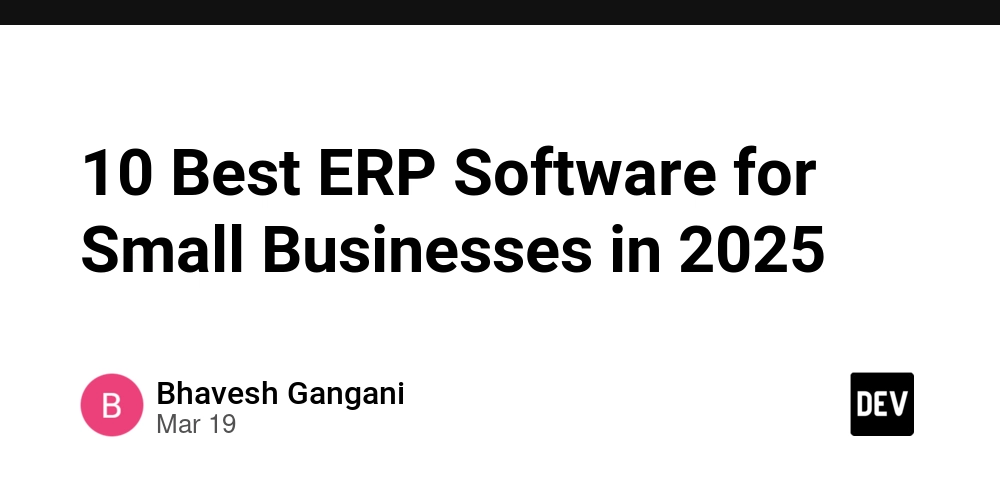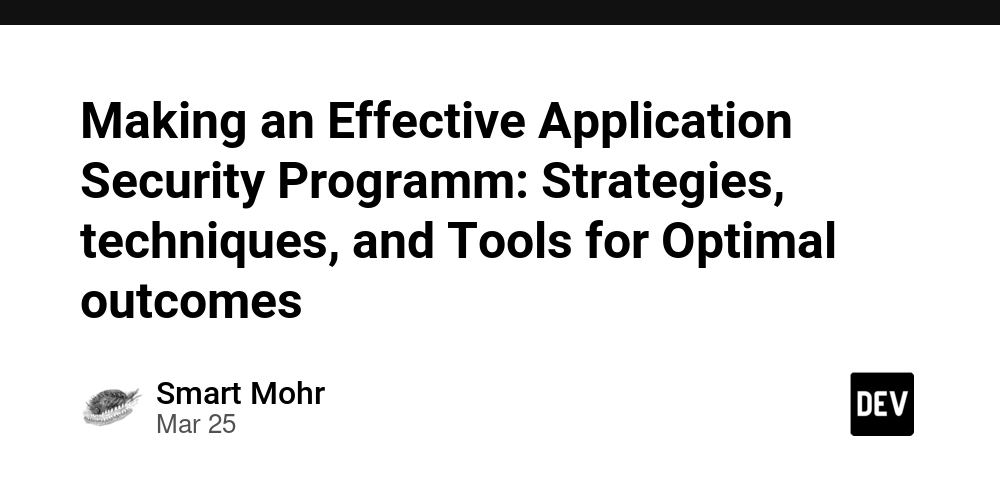The Emergence and Impact of Gitcoin Token (GTC) in the Web3 Ecosystem
Abstract This post explores the rise and influence of the Gitcoin Token (GTC) as a transformative tool in the Web3 ecosystem. We delve into the background of Gitcoin’s community-driven governance, the innovative quadratic funding model, and the incentives that empower open-source developers. Alongside detailed explanations of core concepts and practical use cases, the post also examines challenges, future prospects, and potential integrations with other decentralized platforms. References and related resources—including trusted links on blockchain technology, Gitcoin governance, and open-source funding—further enrich this comprehensive discussion. Introduction Blockchain and decentralized technologies have ushered in a new era of collaboration and innovation across the digital landscape. At the heart of this transformation lies Gitcoin, a platform designed to fund and sustain open-source projects. With the introduction of the Gitcoin Token (GTC) in May 2021, Gitcoin has revolutionized how communities make decisions and are rewarded for their contributions. This governance token not only deepens community engagement but also realigns incentives to foster a sustainable future for open-source development. In this article, we will explore: The history and objectives of Gitcoin. How GTC plays a crucial role in decentralized governance. The mechanics behind the quadratic funding model. Practical applications and challenges faced by the ecosystem. Future innovations and scaling prospects within Web3. Background and Context Gitcoin was born out of a pressing need to support developers who build the backbone of open-source software. Traditional funding models have often left these developers under-compensated. Gitcoin addresses this imbalance by integrating cryptocurrency incentives that encourage collective decision-making and project funding. Key background points include: Decentralized Governance: Gitcoin leverages GTC to enable its community to vote on platform changes and initiatives. This approach embodies the decentralized ethos inherent in blockchain. Quadratic Funding: One of Gitcoin’s most innovative models is quadratic funding. Unlike traditional methods, this ensures that projects receive funds proportionate to community support, even if contributions are small. Open-Source Sustainability: Gitcoin’s vision aligns with a broader movement towards sustaining open-source projects through tokenized incentives. For further reading, check out this article on open source sustainability through tokenization. To understand these components in context, it is essential to be familiar with the basics of blockchain technology itself. A great starting point is this primer on blockchain. Core Concepts and Features Decentralized Governance and Community Engagement GTC is at the core of Gitcoin’s decentralized governance model. Token holders actively participate in proposals, debates, and votes that guide the platform’s direction. This community-driven governance ensures that every decision is made transparently and reflects the collective interests of its participants. Key features include: Voting Rights: All GTC holders have the right to vote on changes to the platform. Proposal Submission: Community members can suggest initiatives that, if supported, move forward. Incentive System: Rewarding developers not only via direct compensation but through participation in governance builds a robust ecosystem of stakeholders. Quadratic Funding and Its Impact Quadratic funding is a novel mechanism that allocates resources based on a formula giving more weight to many small contributions over a few large ones. This process creates a more balanced support structure, ensuring that popular, grassroots projects receive the necessary funding. The benefits of this funding model include: Equal Opportunity: Every contributor’s voice is amplified, regardless of the size of their donation. Community Reflection: Funding outcomes closely mirror the true interests of the development community. Innovation Boost: Projects that might be overlooked by conventional venture capital can thrive when supported by a broad base. Incentivizing Developers and Open-Source Contributors A core challenge in open-source software has always been how to fairly compensate contributors. GTC provides a tangible reward system that directly addresses this issue. This token-based incentive encourages: Regular participation. Increased cross-border collaboration. A sustainable flow of innovative ideas and projects. Furthermore, the integration of blockchain for governance ensures that all transactions and decisions are transparent, secure, and immutable. Comparison Table: Gitcoin Token vs. Traditional Funding Mechanisms Feature Gitcoin Token (GTC) Traditional Funding Models Governance Decentralized, tokens empower community votes Centralized d

Abstract
This post explores the rise and influence of the Gitcoin Token (GTC) as a transformative tool in the Web3 ecosystem. We delve into the background of Gitcoin’s community-driven governance, the innovative quadratic funding model, and the incentives that empower open-source developers. Alongside detailed explanations of core concepts and practical use cases, the post also examines challenges, future prospects, and potential integrations with other decentralized platforms. References and related resources—including trusted links on blockchain technology, Gitcoin governance, and open-source funding—further enrich this comprehensive discussion.
Introduction
Blockchain and decentralized technologies have ushered in a new era of collaboration and innovation across the digital landscape. At the heart of this transformation lies Gitcoin, a platform designed to fund and sustain open-source projects. With the introduction of the Gitcoin Token (GTC) in May 2021, Gitcoin has revolutionized how communities make decisions and are rewarded for their contributions. This governance token not only deepens community engagement but also realigns incentives to foster a sustainable future for open-source development.
In this article, we will explore:
- The history and objectives of Gitcoin.
- How GTC plays a crucial role in decentralized governance.
- The mechanics behind the quadratic funding model.
- Practical applications and challenges faced by the ecosystem.
- Future innovations and scaling prospects within Web3.
Background and Context
Gitcoin was born out of a pressing need to support developers who build the backbone of open-source software. Traditional funding models have often left these developers under-compensated. Gitcoin addresses this imbalance by integrating cryptocurrency incentives that encourage collective decision-making and project funding.
Key background points include:
- Decentralized Governance: Gitcoin leverages GTC to enable its community to vote on platform changes and initiatives. This approach embodies the decentralized ethos inherent in blockchain.
- Quadratic Funding: One of Gitcoin’s most innovative models is quadratic funding. Unlike traditional methods, this ensures that projects receive funds proportionate to community support, even if contributions are small.
- Open-Source Sustainability: Gitcoin’s vision aligns with a broader movement towards sustaining open-source projects through tokenized incentives. For further reading, check out this article on open source sustainability through tokenization.
To understand these components in context, it is essential to be familiar with the basics of blockchain technology itself. A great starting point is this primer on blockchain.
Core Concepts and Features
Decentralized Governance and Community Engagement
GTC is at the core of Gitcoin’s decentralized governance model. Token holders actively participate in proposals, debates, and votes that guide the platform’s direction. This community-driven governance ensures that every decision is made transparently and reflects the collective interests of its participants. Key features include:
- Voting Rights: All GTC holders have the right to vote on changes to the platform.
- Proposal Submission: Community members can suggest initiatives that, if supported, move forward.
- Incentive System: Rewarding developers not only via direct compensation but through participation in governance builds a robust ecosystem of stakeholders.
Quadratic Funding and Its Impact
Quadratic funding is a novel mechanism that allocates resources based on a formula giving more weight to many small contributions over a few large ones. This process creates a more balanced support structure, ensuring that popular, grassroots projects receive the necessary funding.
The benefits of this funding model include:
- Equal Opportunity: Every contributor’s voice is amplified, regardless of the size of their donation.
- Community Reflection: Funding outcomes closely mirror the true interests of the development community.
- Innovation Boost: Projects that might be overlooked by conventional venture capital can thrive when supported by a broad base.
Incentivizing Developers and Open-Source Contributors
A core challenge in open-source software has always been how to fairly compensate contributors. GTC provides a tangible reward system that directly addresses this issue. This token-based incentive encourages:
- Regular participation.
- Increased cross-border collaboration.
- A sustainable flow of innovative ideas and projects.
Furthermore, the integration of blockchain for governance ensures that all transactions and decisions are transparent, secure, and immutable.
Comparison Table: Gitcoin Token vs. Traditional Funding Mechanisms
| Feature | Gitcoin Token (GTC) | Traditional Funding Models |
|---|---|---|
| Governance | Decentralized, tokens empower community votes | Centralized decision-making |
| Funding Mechanism | Quadratic funding favors broad support | Often reliant on large investors |
| Developer Incentives | Direct reward via tokens, promotes engagement | Limited, usually through grants |
| Transparency | Blockchain-based, open and secure | Opaque, susceptible to biases |
| Scalability | Designed to integrate with other decentralized projects | Limited by conventional financial rules |
This table illustrates the stark contrasts between GTC’s modern, blockchain-powered approach and the traditional systems that have long dominated project funding.
Applications and Use Cases
Empowering the Developer Community
GTC epitomizes the shift toward recognizing developers as critical innovators. Many real-world open-source projects have integrated Gitcoin’s model to secure funding. For example, community-led initiatives in blockchain infrastructure have benefited immensely from Gitcoin’s support, ensuring projects continue to evolve with dedicated contributions from passionate developers.
Enhancing Funding Models for dApps
Decentralized Applications (dApps) thrive when there is continuous financial support from their community. Gitcoin’s quadratic funding model ensures that even niche projects receive the attention they deserve, fostering a diverse ecosystem of utility and innovation. This has proven beneficial not only for developers but also for end users who benefit from more robust and secure applications.
Fostering Cross-Chain Collaborations
The convergence of various decentralized platforms has opened up new opportunities for interoperability. For developers who work on cross-chain bridges and messaging protocols, GTC provides a means of not only funding but also governance. Gitcoin’s approach paves the way for projects that require cooperation across different blockchain networks. In this vein, interested readers may explore more about blockchain for open source funding.
Additionally, the vibrant world of Gitcoin has been featured on this Dev.to post on the Gitcoin community, which provides deep insights into how community dynamics drive blockchain innovation.
Bullet List: Advantages of GTC Integration
- Decentralized Decision-Making: Empowers every token holder to influence project direction.
- Broad-Based Funding: Quadratic funding favors widespread community participation.
- Enhanced Transparency: All governance activities are recorded on the blockchain.
- Direct Developer Incentives: Rewards foster persistent innovation in open-source projects.
- Future-Ready: Designed to scale with emerging Web3 technologies.
Challenges and Limitations
Achieving Critical Mass
One of the primary limitations of the Gitcoin ecosystem is the need to attract a critical mass of active developers and engaged users. Without sufficient participation, the effectiveness of decentralized governance can be diluted. The success of the model ultimately relies on broad adoption and the willingness of communities to contribute both intellectually and financially.
Market Volatility and Token Value Fluctuation
As with many cryptocurrency projects, GTC is not immune to market volatility. Token price fluctuations can sometimes deter participation or complicate long-term planning. While this is a common challenge in the crypto space, it requires careful management and strategic planning to ensure that funding models remain robust over time.
Governance Complexity
Decentralized governance, while offering transparency and democratization, can also result in decision-making delays and complications. Ensuring that every vote is informed and that malicious actors do not compromise the integrity of proposals remains an ongoing challenge. Gitcoin continues to iterate on its governance model to balance community input with efficient decision-making.
Integration and Scalability Concerns
With the rapid evolution of Web3 technology, scalability and seamless integration remain key concerns. Adapting Gitcoin’s platform to accommodate exponential growth while maintaining interoperability with other decentralized networks is an area that will require continuous innovation and technical upgrades.
Future Outlook and Innovations
Improved Scalability and Cross-Chain Interoperability
The future of Gitcoin and GTC lies in their ability to scale efficiently with increasing demand. Enhancements in cross-chain technology and user experience will be critical in ensuring that Gitcoin can support a growing number of projects and diverse blockchain networks. Innovations such as layer-2 solutions and improved data compression techniques are expected to facilitate this growth.
For additional insights into scalability trends and network upgrades, you might find useful resources on Arbitrum and Ethereum interoperability and network upgrades.
Expanded Educational Initiatives
To empower users and developers alike, Gitcoin is likely to invest in expanded educational resources. These initiatives can help educate the community about governance processes, token economics, and the technical aspects of decentralized finance. An informed community is essential to the success of any open-source ecosystem.
Broader Integrations with Decentralized Ecosystems
The Gitcoin model serves as a blueprint for future open-source funding solutions. There is significant potential for GTC to be integrated into a wider array of decentralized platforms such as decentralized autonomous organizations (DAOs) and cross-chain liquidity systems. Such integrations can further solidify the token’s position in the broader Web3 ecosystem. For example, exploring Arbitrum and smart contract audits and improvements in user experience highlight the trend toward a more connected decentralized future.
Enhancing Collaboration Through Improved Governance Frameworks
Future developments in Gitcoin’s governance may incorporate more sophisticated consensus mechanisms and enhanced voting frameworks. These improvements could mitigate some current limitations, ensuring that decision-making remains both democratic and efficient. Additionally, integration of decentralized identity solutions—as discussed in Arbitrum and decentralized identity—could further streamline governance processes.
Additional Resources and References
For those looking to dive deeper into topics related to GTC and open-source funding, consider checking out these authoritative resources:
Furthermore, the Gitcoin community and its impact on open-source development have been well-documented in the blockchain space. A notable discussion on the community’s engagement can be found in this Dev.to post on the vibrant Gitcoin community, while insights into funding models and matching funds are explored in this GitHub Sponsors article on Dev.to.
Arbitrum Integration and Related Developments
While Gitcoin primarily focuses on funding and governance, the broader decentralized ecosystem—especially on platforms like Arbitrum—also addresses issues of network scalability, audit security, and interoperability. Here are five selected resources that detail technical enhancements in the decentralized space:
- Arbitrum and Ethereum Interoperability: Read More
- Arbitrum and Network Upgrades: Learn About Upgrades
- Arbitrum and User Experience: User Experience Insights
- Arbitrum and Decentralized Identity: Explore Decentralized Identity
- Arbitrum and Smart Contract Audits: Security Audits Explained
Summary
The emergence of the Gitcoin Token (GTC) marks a pivotal evolution in how communities support open-source innovation and decentralized applications. Through the introduction of decentralized governance, quadratic funding, and direct developer incentives, Gitcoin has positioned itself as a forward-thinking model for resource allocation in the Web3 ecosystem. Despite challenges such as market volatility, the need for widespread adoption, and complex governance issues, the platform’s commitment to transparency and innovation sets a robust foundation for future growth.
Key takeaways include:
- GTC’s Role: It empowers communities to drive decision-making, ensuring projects receive funding that accurately reflects grassroots support.
- Innovative Funding: The quadratic funding model revolutionizes open-source sustainability by prioritizing broad, small-scale contributions over few large investments.
- Future Integration: The potential for broader integrations, interoperability with other decentralized platforms, and improved user education promises a dynamic future for open-source projects.
Looking ahead, the advancements in blockchain interoperability, scalability improvements on platforms like Arbitrum, and continuous innovations in decentralized identity and governance will drive the evolution of the Gitcoin ecosystem. As developers increasingly seek fair compensation and transparent governance, models like Gitcoin’s are likely to serve as blueprints for a more inclusive and sustainable digital future.
This comprehensive exploration—bolstered by references to authoritative sources and insights from industry experts—illustrates how GTC is not only redefining funding models but also paving the way for broader community engagement in Web3. Whether you are a developer, investor, or technology enthusiast, understanding Gitcoin Token’s impact offers a glimpse into the transformative power of decentralized collaboration.
Embracing these innovative models is essential for building a resilient and diverse open-source ecosystem in the digital age.











































































































































































![[The AI Show Episode 142]: ChatGPT’s New Image Generator, Studio Ghibli Craze and Backlash, Gemini 2.5, OpenAI Academy, 4o Updates, Vibe Marketing & xAI Acquires X](https://www.marketingaiinstitute.com/hubfs/ep%20142%20cover.png)




























































































































![[DEALS] The Premium Learn to Code Certification Bundle (97% off) & Other Deals Up To 98% Off – Offers End Soon!](https://www.javacodegeeks.com/wp-content/uploads/2012/12/jcg-logo.jpg)


![From drop-out to software architect with Jason Lengstorf [Podcast #167]](https://cdn.hashnode.com/res/hashnode/image/upload/v1743796461357/f3d19cd7-e6f5-4d7c-8bfc-eb974bc8da68.png?#)








































































































.png?#)


































_Christophe_Coat_Alamy.jpg?#)
.webp?#)
 (1).webp?#)






































































































![Apple Considers Delaying Smart Home Hub Until 2026 [Gurman]](https://www.iclarified.com/images/news/96946/96946/96946-640.jpg)
![iPhone 17 Pro Won't Feature Two-Toned Back [Gurman]](https://www.iclarified.com/images/news/96944/96944/96944-640.jpg)
![Tariffs Threaten Apple's $999 iPhone Price Point in the U.S. [Gurman]](https://www.iclarified.com/images/news/96943/96943/96943-640.jpg)

































































































































